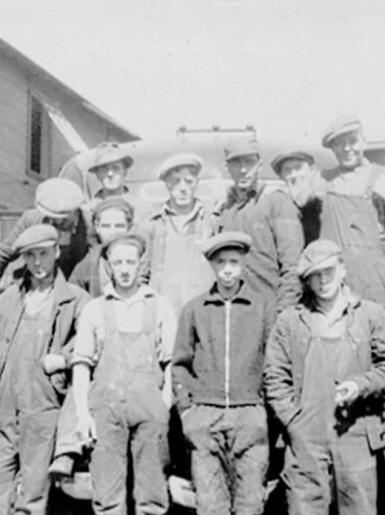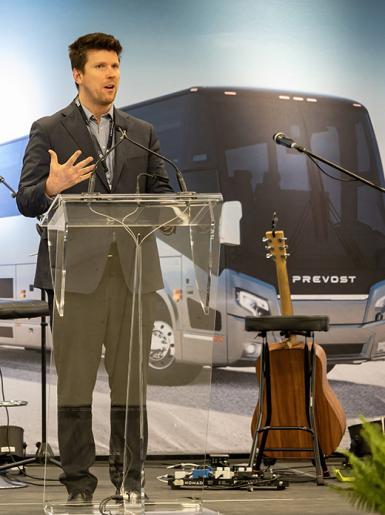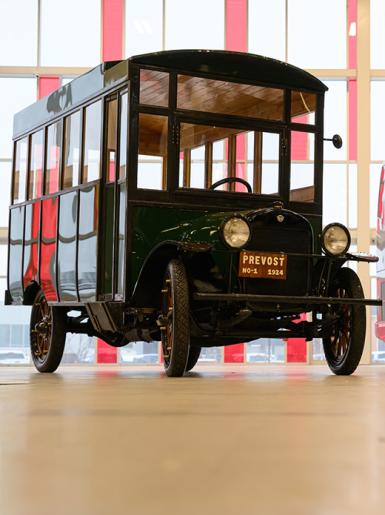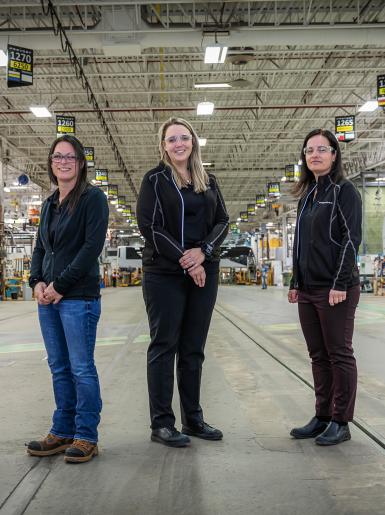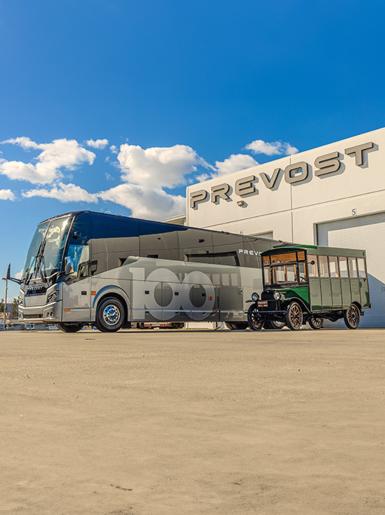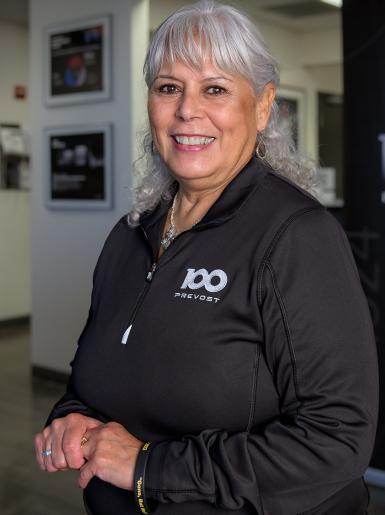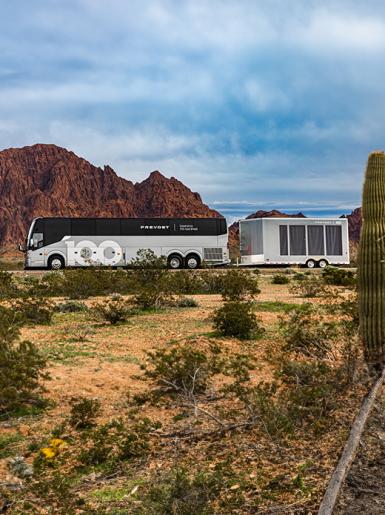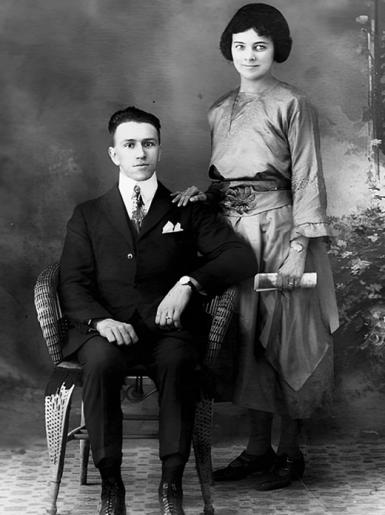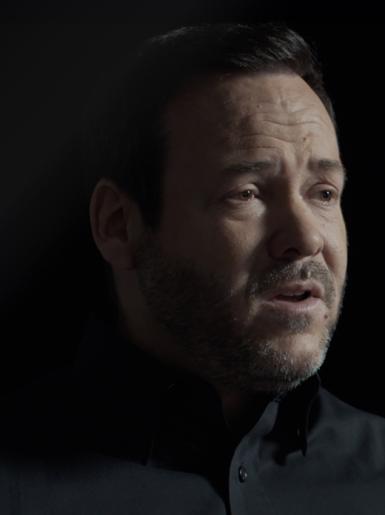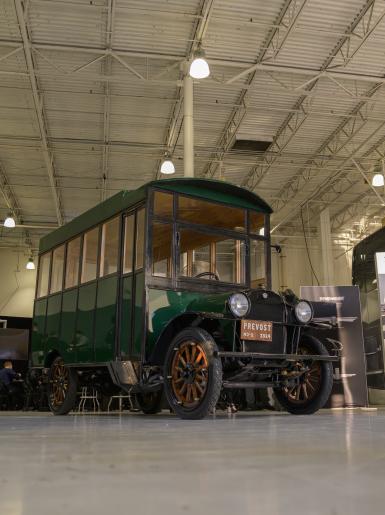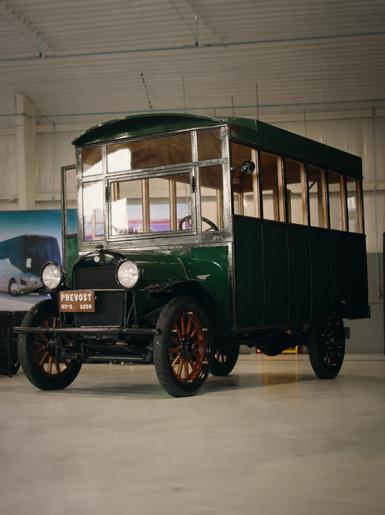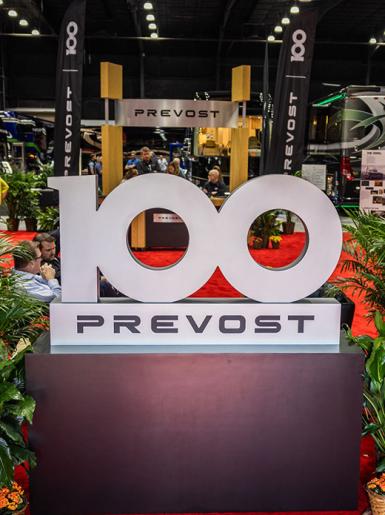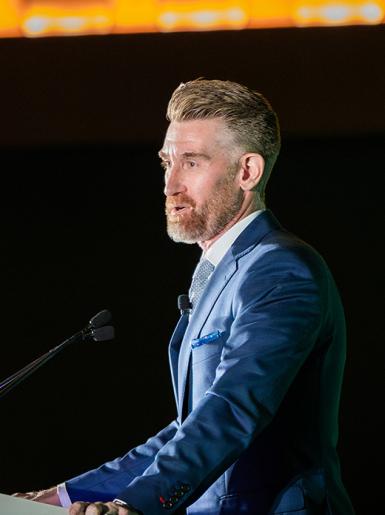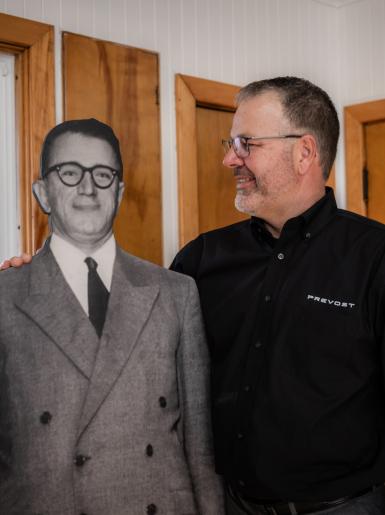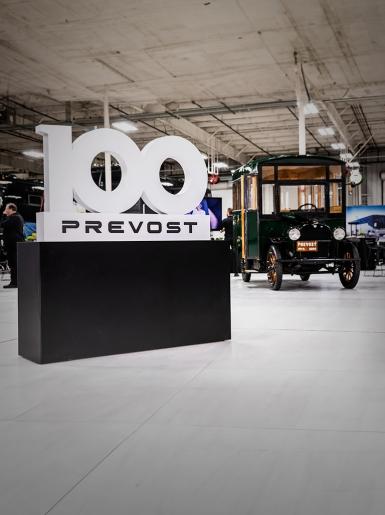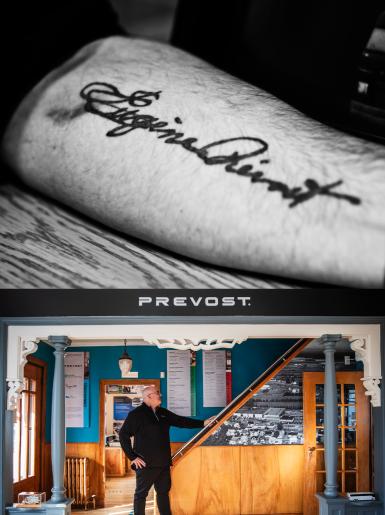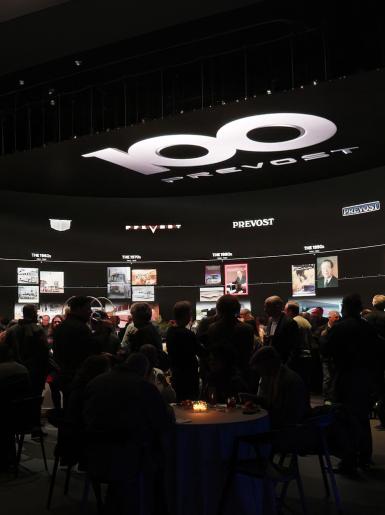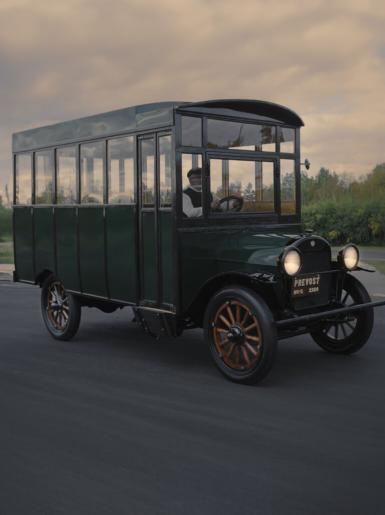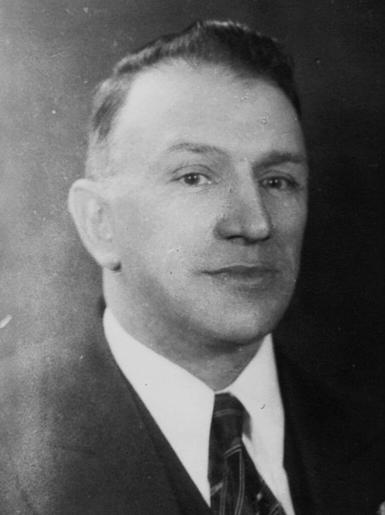Eugène Prévost:
Eugène Prévost was born in Sainte-Claire on November 12, 1898. The son of a farmer, he transitioned from working the land to becoming a carpenter-cabinetmaker.
In 1919, at the age of 20, he launched 'The Prevost Company,' a woodworking and furniture business, after constructing a two-story building in Sainte-Claire, Québec, to house his operations. Eugène Prévost married Clarisse Leblond on May 29, 1922, and together they had 10 children, several of whom worked in the family business.


“Anything worth doing is worth doing well.”
Eugène Prévost
Eugène's budding company entered the bus business when he received a commission to construct a wooden coach body to be mounted on an REO truck chassis. Georges Roy, the owner of a nearby bus line, was Prevost's first bus customer. The bus body, completed in 1924, was made of wood with aluminum sheeting, took nearly a year to build, and cost $3,600. Roy operated the bus from Sainte-Claire to Lévis near the St. Lawrence River, and its high regard brought Eugène additional bus orders.
This initial order led to many others. Eugène continued to produce buses on a small scale, while also maintaining his furniture business. To manage production, Eugene limited bus production to one vehicle each winter.
Eugène was more than just an entrepreneur; he was also deeply involved in his community. In the 1920s, he also developed a system of hydraulic turbines and batteries to generate electricity for his business. This innovation not only improved his company operations; it also significantly impacted his community. He worked with Sainte-Claire leaders to bring electricity to 23 homes, a full five years before it was officially scheduled to reach his village.
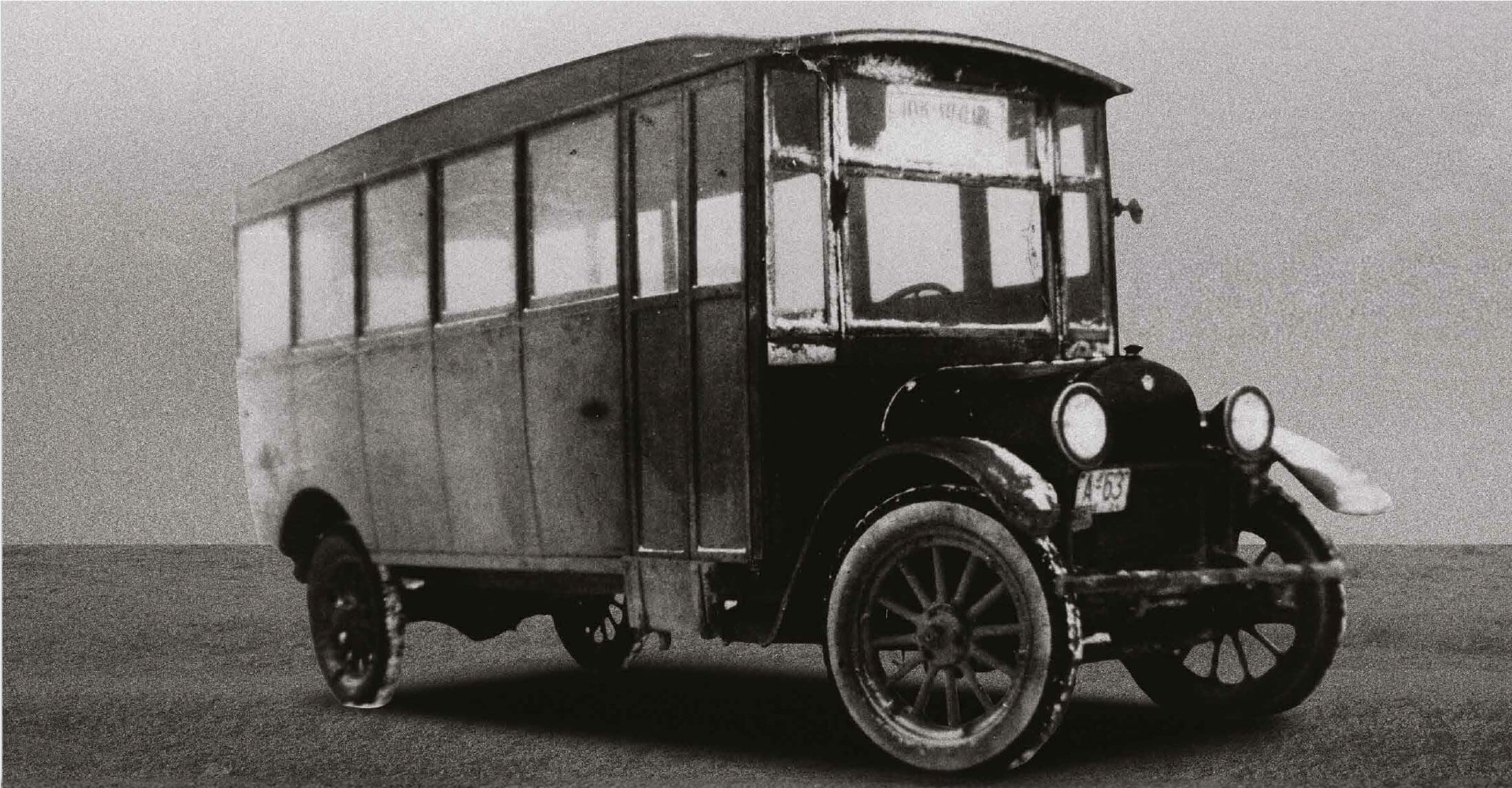
In the 1930s, as the demand for buses grew, Eugène employed a small contingent of employees at his Sainte-Claire factory. During this time, several smaller truck bodies were built in the early years of bus production. To increase production, Eugène constructed a new manufacturing facility, capable of building as many as ten units annually.


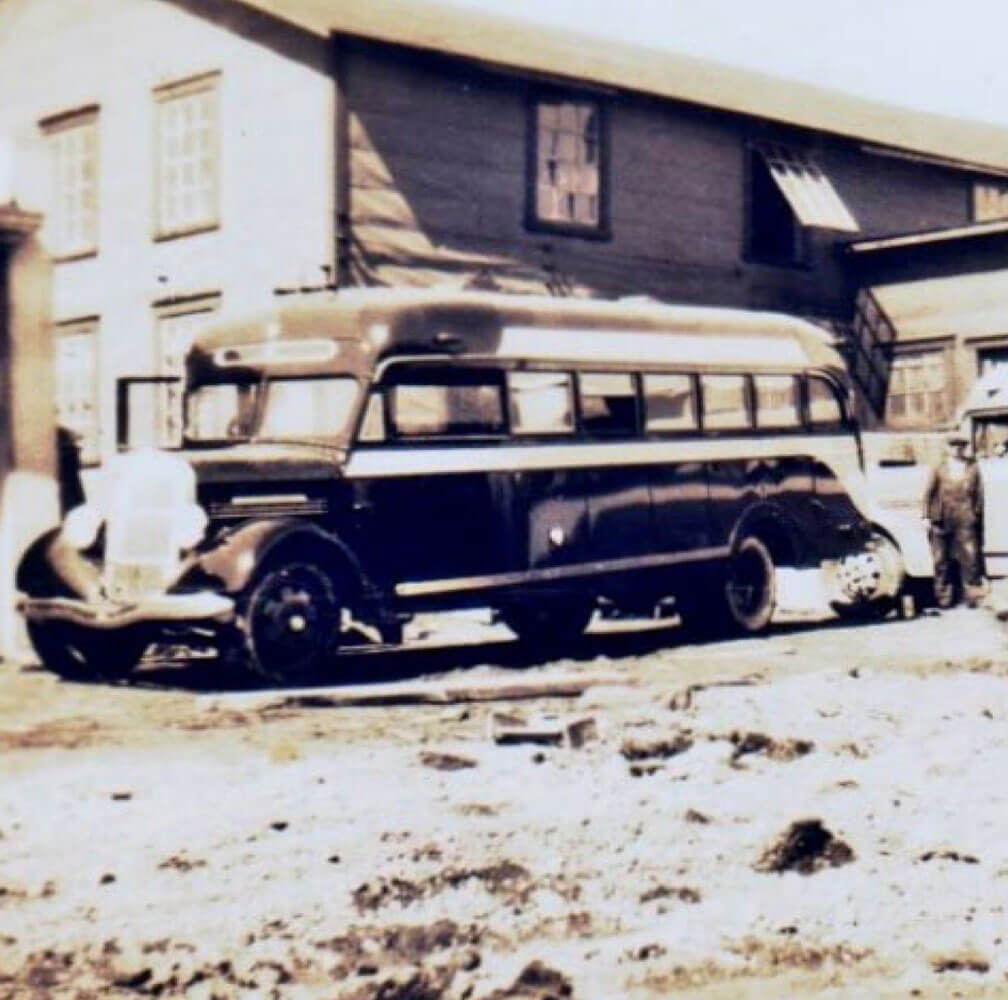
After several years of measured success and increased interest in his designs, Eugène took steps to make bus production a separate, viable operation in the 1940s. He obtained his first significant contract from the Defence Ministry of Canada to build buses for soldiers and those working at war plants. His bus design transitioned from all-wood construction to a metal body over a wooden frame before eventually becoming an all-metal body over an all-metal skeleton. Gradually, he phased out cabinet work to concentrate on manufacturing highway motorcoaches. He also established bus sales agents beyond the province of Québec, and for the first time, these buses were marketed and sold in the rest of Canada.
The company’s plant grew to 40,000 square feet and was capable of producing its own windows and seats. It also expanded to house metal and woodworking shops, and die-casting and plating facilities, along with a foundry. Eugène also incorporated “Les Ateliers Prévost Inc.” (Prevost Workshops) as a separate bus manufacturing firm. At this time, the new model, the Interurbain, was offered in four different sizes and became more popular than earlier cab-over-engine coaches.
By the end of the decade, Eugène had moved to an assembly-style production, focusing exclusively on coach-only production.

During the 1950s, he received orders for highway buses from the Canadian government, including the Department of National Defense. For a brief period, the company enjoyed substantial success from Interurbain and Prevocar sales. More than 100 coaches were produced each year in 1949, 1950, and 1952, making the company the largest intercity coach builder in Canada.
From Eugène’s first wooden body coach mounted on a truck chassis, he grew the company into a full-scale business, contributing significantly to the growth of the industry and furthering his mission to bring comfort to people and improve their lives.
Eugène Prévost passed away on February 2, 1965, at the age of 66, leaving a lasting legacy beyond his 10 children and wife, Clarisse. His impact endures as the Prevost company thrives across North America, a source of pride for his family and Sainte-Claire.


